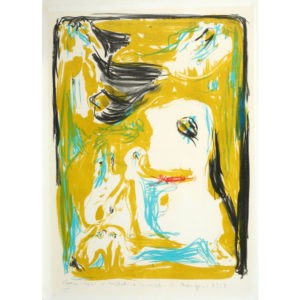Jorn, Asger
Here is the only result
Asger Jorn, born Asger Oluf Jørgensen on March 3, 1914 in Vejrum, Denmark, was a Danish painter of great importance in the art of the 20ᵉ century. He died on May 1ᵉʳ, 1973 in Aarhus, Denmark.
From 1936 to 1939, Jorn studied in Paris at Fernand Léger's Académie contemporaine and worked with Le Corbusier on the decoration of the Temps nouveaux pavilion at the Universal Exhibition. His first solo exhibition took place in Copenhagen in 1938.
After the Second World War, Jorn became involved in several avant-garde movements. In 1948, he became one of the founders and theoreticians of the CoBrA movement (Copenhagen, Brussels, Amsterdam), which brought together artists such as Karel Appel, Constant, Corneille and Christian Dotremont.
In the 1950s, Jorn produced highly colorful works exploring animal and plant themes. At the end of the decade, he began "modifying" paintings found at flea markets, creating the "Modifications" and "Defigurations" series.
Jorn was known for his political commitment and opposition to all forms of authority. In 1964, he spectacularly refused the Guggenheim Prize, sending an outraged telegram to the organizers.
Throughout his career, Jorn has explored various forms of artistic expression, including painting, sculpture, ceramics, tapestry and writing. His work reflects a constant quest for artistic freedom and a critique of established conventions.
Today, Asger Jorn's works are exhibited in museums around the world, including the Jorn Museum in Silkeborg, Denmark, which he himself helped create.

